|
Inspired by The Name of the Wind and The Wise Man's Fear by Patrick Rothfuss There are quite a few snippets in The Kingkiller Chronicle that make me think we have licence to imagine all manner of delicious goings on at the Waystone. We know that Kvothe has supplies: Chronicler raised an eyebrow. “Chocolate would be wonderful, if you have it. I wouldn’t expect to find that sort of thing this far from . . .” He cleared his throat politely. “Well, anywhere.” “We have everything here at the Waystone,” Kvothe said, making an offhand gesture to the empty room. “Excepting any customers, of course.” Old Cob also tells us that he has skill: “You’re a fine cook, Kote, and you’ve got the best beer in twenty miles. All folk need is a bit of an excuse to stop by.” Even though his other skills have seemingly abandoned him, our 'innkeeper' still musters self-confidence (and perhaps a smidgen of pride) in his food. He rubbed his hands together eagerly. “Right then. Dinner. What would you like? Hot or cold? Soup or stew? I’m a dab hand at pudding too.” And, crucially, Kvothe has lots of flavour-filled experiences to draw on for inspiration. Throughout the story he tells, he never takes a meal for granted and he pays attention to what he's eating. While a sizeable chunk of his early life was spent 'Too hungry to worry about tomorrow', the Kvothe we're with in the frame story appears to have plenty of time on his hands to recall his yesterdays. I like to think some of the puddings he's such a dab hand at are informed by these recollections. With that in mind, here are five speculative Waystone puddings. Click on the pictures to jump to the respective recipes and rationale. A Terrifying Piece of Alchemy: Plum Bob Pudding When Luck Smiles: Warm Apple Tart Something Wonderful Happened in My Mouth: 'Metheglin' Poached Pears Sweet Relief: Peach Bread and Butter Pudding Abenthy's Insult: Lemon Custard I'll be taking on another big Kingkiller Cook later this year – perhaps pies, soups or food for the road. If you can't wait until then for something savoury, here's some beef stew and some potato and bacon soup from The Name of the Wind.
3 Comments
Recreated from An Ember in the Ashes by Sabaa Tahir [Laia] My mouth waters, and I long for Nan’s food. We never had much, but whatever we did have was made with love, which I now know transforms simple fare into a feast. Here, we eat the Commandant’s scraps, and no matter how hungry I am, they taste like sawdust. . . . [Elias] Someone shoves a plate of spiced kabobs into my hand. Someone else, a drink. There's little room for love in the food at Blackcliff. The students in Sabaa Tahir's An Ember in the Ashes are commonly served 'swill' and 'slop' that plops unappetizingly on the plate. Even celebratory kabobs are 'shoved' not shared. It's a cruel place bereft of kindness, especially when compared with Nan's kitchen which is fragrant with sweetness and spice and familial affection. Because I think I can avoid the eye of the Commandant, I've had Nan's apricot jam infiltrate the kabob recipe to help transform this fare into a feast. Ingredients (makes 12 kabobs)
Apricot jam sauce (to go with 12 kabobs)
Special equipment: Grill pan with a wire rack, 12 skewers Instructions
Bonus tzatziki recipe – Ingredients (to accompany 12 kabobs)
Recreated from 'Kings of the Wyld' by Nicholas Eames Poor Gabe looked as though he’d been stabbed. Clay half-expected that disbelief to boil over into anger, but Gabriel just shook his head and returned his attention to the untouched plate before him. Kallorek called for a servant to take Valery to her room. The three of them ate dessert (a chocolate pie topped with chopped almonds and whipped cream) and sipped sweet red beer in mildly uncomfortable silence. For a moment, let’s pretend I have an enchanted hat that will give me food on demand (a delightful fantasy). As appealing as the many dishes of Nicholas Eames’ ‘Kings of the Wyld’ sound – rabbit and mushroom stew, breakfast banquets at the table of a king, thick slabs of salted pork belly, crispy-skinned chicken, a staggering variety of jams – this chocolate pie would have to be my first choice out of the hat, even accompanied by the most uncomfortable of silences. I put a strawberry ‘Rose’ at the centre of mine just to make sure I didn’t lose sight of what’s important beyond my favourite brother-in-arms, chocolate. Ingredients (serves 5 very hungry bandmates or 8 regular people) For the pastry:
For the chocolate filling:
To serve:
Special equipment:
Instructions
If having to chew your chocolate just seems like too much effort, try my chocolatl from Philip Pullman's 'The Book of Dust'.
Recreated from The Wolf of Oren-yaro by K.S. Villoso He returned with two steaming bowls. They were filled to the brim with white rice, topped with scrambled eggs and thick, yellow curry sauce. It was sprinkled with chopped green onions. My first real meal in two days was heavenly. I couldn’t even tell if Khine was a decent cook or not—I was just that hungry. It was a good thing he had included the chopsticks when he gave me my bowl, or I would’ve just dug in with my fingers and made a fool out of myself. I found myself asking for seconds, which Khine readily obliged. I washed it all down with the promised milk tea, which had since grown cold. It tasted faintly of jasmine and toasted rice. I like to think of rice in K.S. Villoso’s The Wolf of Oren-yaro as a character in its own right; it has quite a story to tell. Affected by seasonal storms, it becomes a subject of debate for ambitious warlords and a thorn in Bitch Queen Talyien’s backside. It has regional characteristics with something to say about diversity in Talyien’s world (‘Oren-yaro rice is grainier than the sought-after fragrant variety grown in the Sougen region’). Served well, it shows how very magnanimous Talyien can be (“If you continue to serve these rice balls for breakfast, you may keep [your head].”) And for a bonus, it comes in several intriguing guises – rice balls, steamed rice buns, rice coffee, herbed rice porridge and as a purple rice cake. Rather graciously, it also lays itself down as a bed on which other food can shine, variously appearing in cahoots with barbecued eels and pickles, soured white fish with leeks and pig’s-ear mushrooms, a hot and sour soup made of beef leg bones, and fish in a black bean sauce. Yum! My favourite, though, is the meal quoted above because it brings uncomplicated delight in the plot and in real life – like Talyien, we all went back for seconds too (and I got to keep my head). Ingredients For the curry sauce (serves 3-4):
For the rice (per person):
For the scrambled egg (per person):
To serve (per person):
Instructions For the curry sauce:
For the rice:
For the scrambled egg: Note: My hob has heat settings from 1-6, I cook scrambled eggs on 4.
To assemble:
Recreated from The Name of the Wind by Patrick Rothfuss The third day was much the same. We passed the time pleasantly, not in long conversation, but more often watching the scenery, saying whatever happened to come to our minds. That night we stopped at a wayside inn where Reta bought fodder for the horses and a few other supplies. Reta retired early with her husband, telling each of us that she'd arranged for our dinners and beds with the innkeeper. The former was quite good, bacon and potato soup with fresh bread and butter. The latter was in the stables, but it was still a long sight better than what I was used to ... I share Kvothe’s fondness for taverns (‘a safe place, a refuge of sorts’), especially at this moment in time with a bellyful of slow-roasted pork and crackling from our local inn. The inn food served up in Patrick Rothfuss’s The Name of the Wind seems a bit hit-or-miss though, ranging from the ‘quite good’ to the unequivocally ‘lovely’. Here’s what some of the Chronicle's establishments are serving: At a ‘little dockside inn’ Eggs with sausages and fried potatoes At a ‘slightly grubby in Waterside’ A ‘real breakfast’ of eggs, ham, bread, honey, butter and milk. From the Laughing Man Inn ‘A whole flask of spiced wine and a loaf of fresh bread nestled next to a turkey breast bigger than both my balled fists.’ At the Horse and Four A ‘lovely dinner of venison steak with a leaf salad and a bowl of delicately spiced tomato soup. There were fresh peaches and plums and white bread with sweet cream butter’, served with ‘an excellent dark Vintish wine’. At a ‘wayside inn’ Horse fodder. Also some ‘quite good’ bacon and potato soup with fresh bread and butter. At the Waystone Inn ‘Everything’. Naturally, with such high praise, I felt compelled to make the bacon and potato soup. My father-in-law was the one to introduce me to the idea of lightly mashing the potatoes and, had the wayside inn known his trick, Kvothe’s verdict may have been elevated to a ‘lovely’ there too. Ingredients (serves 4)
Instructions
Serve with fresh bread and butter. Recreated from The Court of Broken Knives by Anna Smith Spark 'We'd buy bread, if you have some,' he said simply. 'Milk, if you have that. Or just water.' 'Sweet water or salt?' she said in response, and laughed a harsh laugh. 'You're in luck, for I have milk, and bread, and curd cakes hot from the oven. If you've money for it.' Food in Anna Smith Spark’s The Court of Broken Knives is an emblem of the book’s wider preoccupations; where there’s food, there’s death, disgust, desire, decadence and a modest dose of pleasure.
If that's not an invitation to eat cake, I don't know what is. If I can be loose with sugar varieties, all the ingredients can be found in the book itself. Ingredients (makes 6 tartlets but can be scaled easily to multiples of 3) For the cakes:
Special equipment
Instructions
Serve with natural yoghurt to heighten the sourness; serve with vanilla ice cream to heighten the sweetness. Recreated from Shadowblack by Sebastien de Castell Not knowing what else to do, I picked up one of the butter biscuits. I was going to put it in his paw, but he'd already stuck it back under the water, and instead opened up his fuzzy little mouth. I deposited the biscuit there and was soon treated to the sound of a squirrel cat nibbling on a butter biscuit while moaning rapturously. 'Oh yeah,' he mumbled, the words sounding garbled on account of all the chewing noises. 'This is how I want to spend my life from now on.' Confession: this is shortbread. I can only hope said squirrel cat would eat them anyway (they are very buttery), and not my eyeballs in retribution. Unlike my butter biscuits inspired by Nnedi Okorafor's Akata Witch, these will withstand a thoroughly good dunking. I'd suggest tea, not bathwater. These taste significantly better (more buttery) after an evening's rest, so make a day ahead. They'll last for up to a month in an airtight container. Ingredients (makes 12)
Equipment: mixing bowl, wooden spoon for beating, rolling pin, biscuit cutter (appr. 6cm diameter), baking tray, fork Instructions
Recreated from The Name of the Wind by Patrick Rothfuss Dinner in the Mess was brown bread with butter, stew, and beans. Manet was there, his wild hair making him look like a great white wolf. Simmon and Sovoy groused idly about the food, making grim speculations as to what manner of meat was in the stew. To me, less that a span away from the streets of Tarbean, it was a marvellous meal indeed. Stew is a Fantasy staple; you don't have to look far to find a pot of it simmering away on the pages somewhere. It's cheap, uncomplicated and evocative (think warm food on cold nights for peasants, soldiers and e'lir alike) which may account for its ubiquity. It's also absolutely delicious when cooked 'low and slow' – easily my favourite winter meal. So, Simmon and Sovoy, I don't care who your dads are; don't go grousing about my stew however lowly the manner of the meat! Beef stew (serves 6-8)
**This makes a thick stew – some of the liquid evaporates with cooking and what remains is thickened by the flour and fat. If you want a thinner but more abundant gravy, add more stock than I've recommended at Step 6. Dumplings (optional, makes 12-16)
Equipment: frying pan, tongs for turning the beef, casserole dish, wooden spoon, large mixing bowl for the dumplings NB: This makes a thick stew – some of the liquid evaporates with cooking and what remains is thickened by the flour and the fat. If you want a thinner but more abundant gravy, add more stock than I've recommend at Step 6.
If you like all your food hearty, you might enjoy these puddings recreated from Philip Pullman's 'La Belle Sauvage'.
Recreated from A Time of Dread by John Gwynne Riv sat in her barrack's feast-hall, picking at a plate of boar ribs and sweet parsnips. Jost and Vald were with her, sitting beside each other. At any other time the sight of them would have made her chuckle ... 'Don't want that? I'll finish it for you,' Vald said, eyeing up her plate ... 'Have it,' Riv said, pushing her unfinished food towards Vald. 'I'd have had that!' Jost exclaimed, eyes bulging in his gaunt face. He ate almost as much as Vald, not that you'd know it to look at him, the two of them often arguing over food. 'Too slow.' Vald winked at Jost. John Gwynne's feast-halls play host to some hearty fantasy staples. 'A Time of Dread' features steaming tea, warming porridge, tender meats, melting onions, sweet vegetables and thick gravies. There's even a dog's dinner – a well-earned restorative for the brave hound – that sounds fit for the table of any fantasy food fan. You'll find it listed here along with the rest of the book's victuals. Of the various meats mentioned, I've gone for the ribs (pork, from the butcher's rather than from a wild boar I've speared myself) and slathered them in a honey glaze. Honey is one of the book's recurring ingredients, eaten for medicinal purposes as well as pleasure. In light of that, let's raise a horn of mead to this healthy meal and argue over who gets to pick the bones clean for some extra goodness. This is a dish best cooked 'low and slow' so leave time for up to four hours in the oven. Ingredients (serves 2) The ribs themselves: Six ribs, appr. 700g Salt and pepper to season For the glaze: 3 tbsp honey 1 tbsp tomato paste 1 tbsp soy sauce 1 tbsp apple cider vinegar* 1 tsp paprika *any vinegar will do as an alternative Parsnips: 2 parsnips 2 tsp dried thyme 1 tbsp olive oil Salt and pepper to season Instructions For the ribs:
To serve: I served with carrots roasted in the same way and at the same time as the parsnips, as well as some steamed Swiss chard. The best addition, however, was some blue cheese – perfect for breaking up the sweetness of the honey and parsnips. Inspired by C. Robert Cargill's Sea of Rust My name is Brittle. Factory designation HS8795-73. A Simulacrum Model Caregiver. But I like Brittle. Robots don’t eat, but Sea of Rust is still peppered with the figurative food of everyday speech and memories of food from former times. It’s not a world where what we humans eat is significant, but there are still food-inspired verbs like ‘sandwiched’ and ‘pancaked’; there are food-based endearments like ‘honey’ and ‘peach’; you can still ‘have beef’ or ‘go nuts’; heavy things drop ‘like a sack of potatoes’ and sharp knives still cut like ‘a knife through warm butter’. While none of these a meal make, our robot protagonist with the cracking name gave me a way in. My imitation cover art is peanut brittle with extra nuts, strawberry (jam) and peach – all flavours you’ll find mentioned in the book. Once recreated, smash it up and devour the parts like your life depends on it. Ingredients
Special equipment: foil-lined baking parchment for the mould, a book, a jam thermometer (optional), a wooden spoon for stirring, a pastry brush for decorating Preparation:
Cooking instructions
If you enjoy working with sugar at speed, try my honeycomb inspired by John Gwynne's Malice. If you want peanuts in a savoury dish, try the Kung Pao chicken recreated from Sylvain Neuvel's Sleeping Giants. |
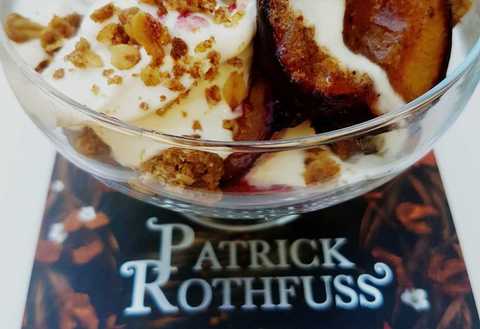
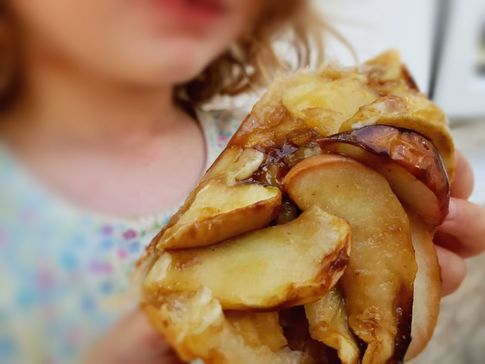
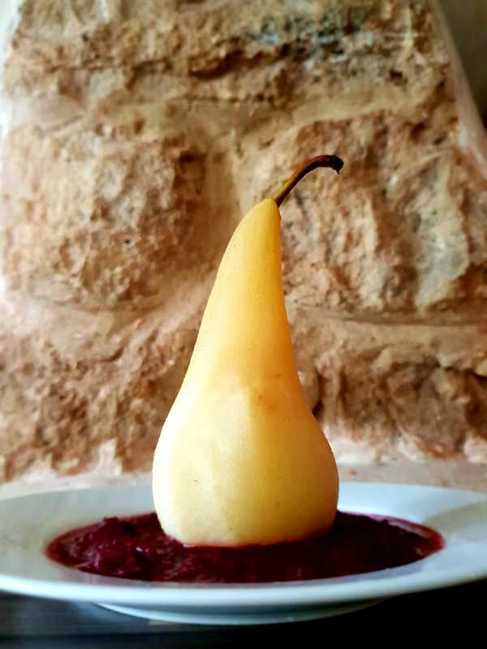
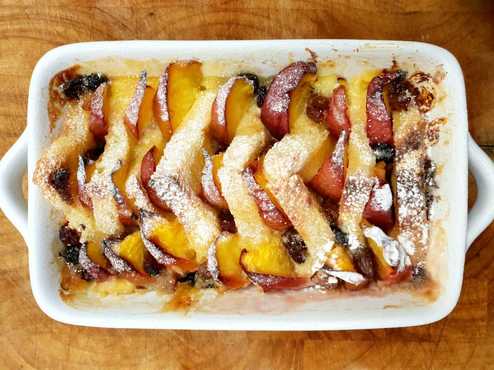
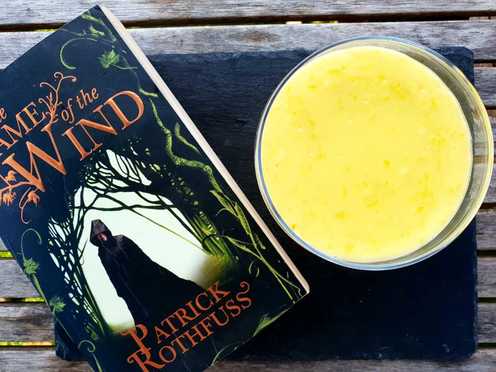
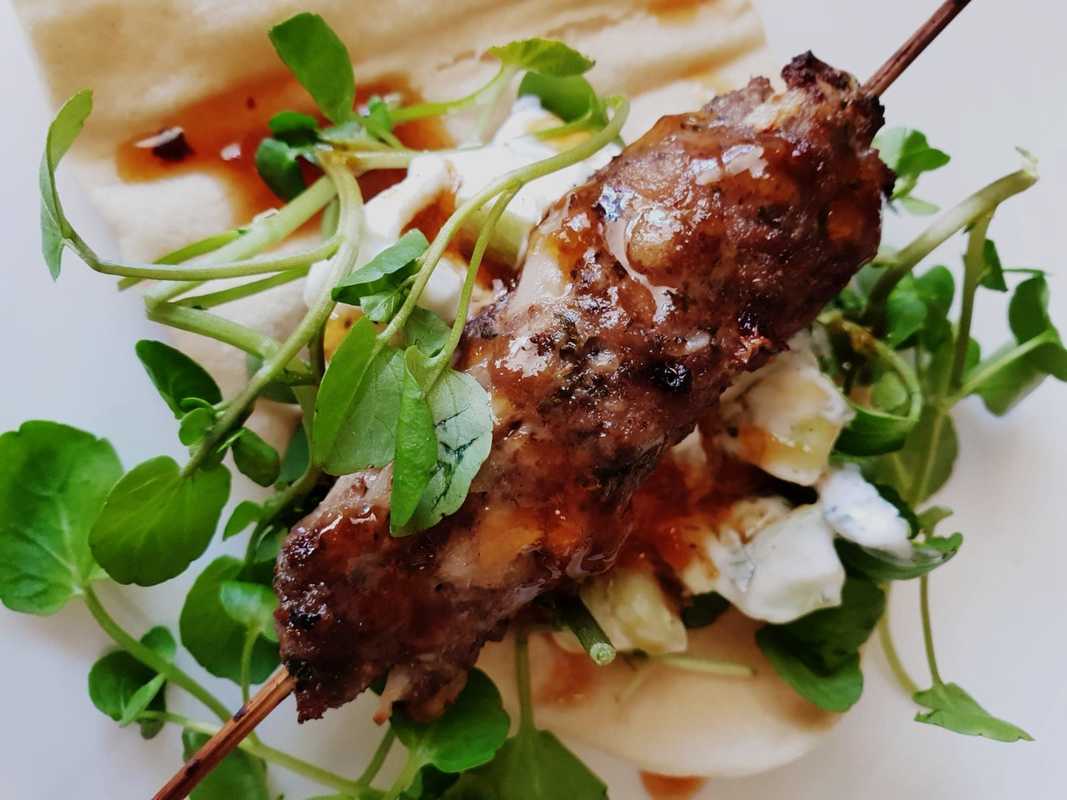
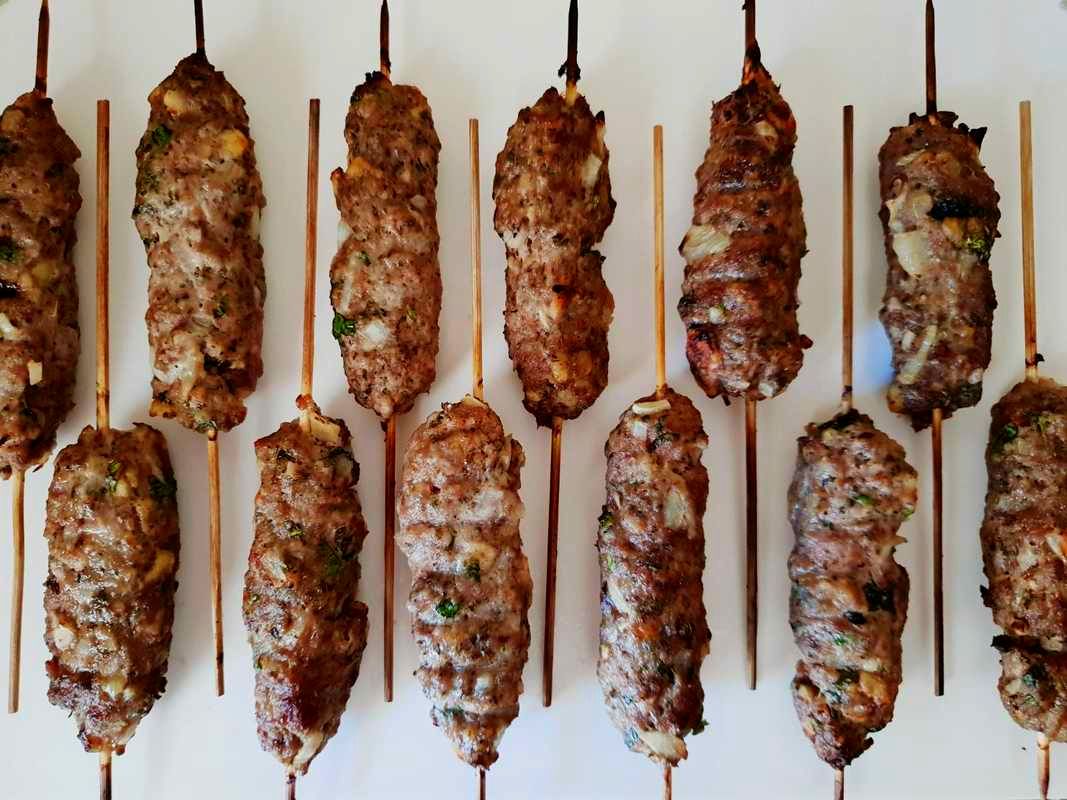
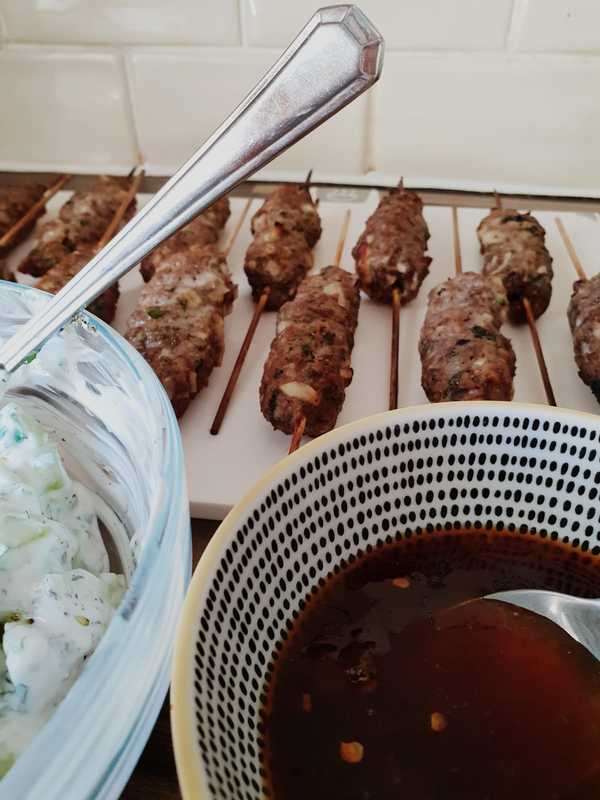

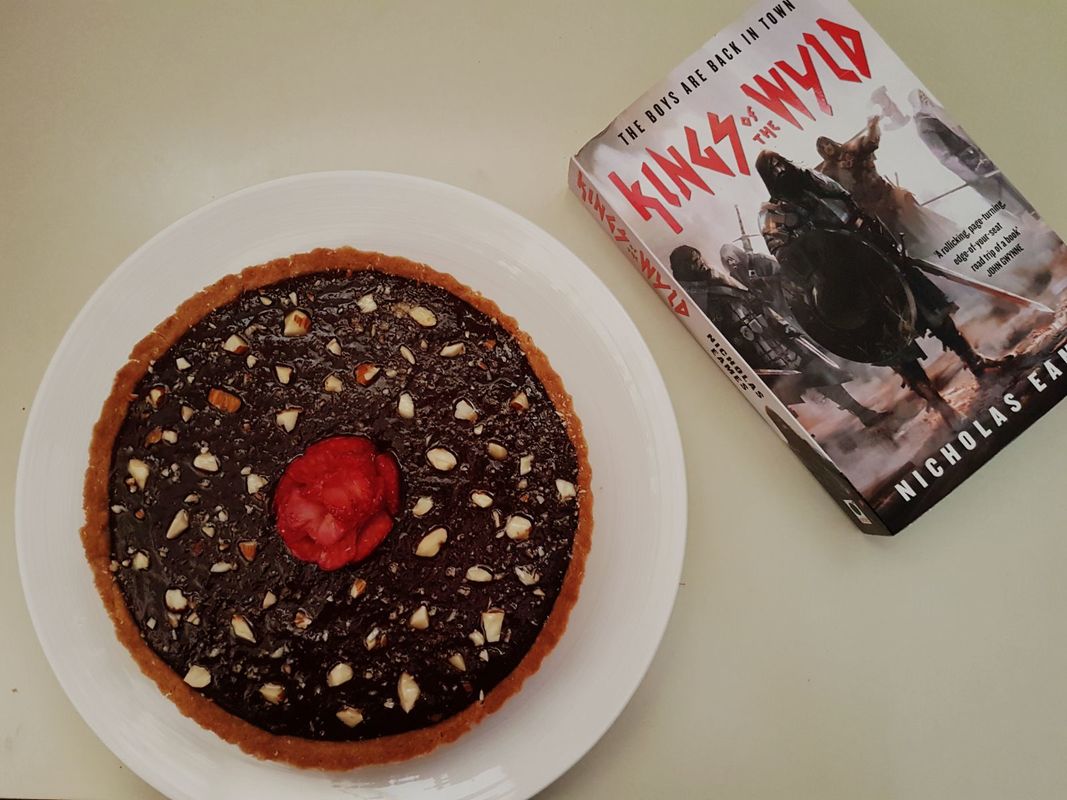

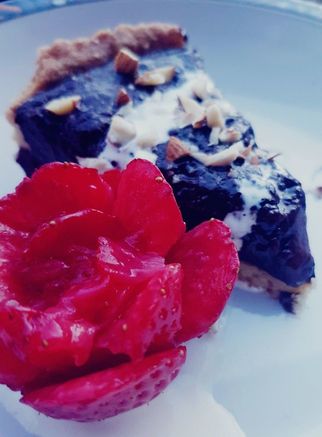


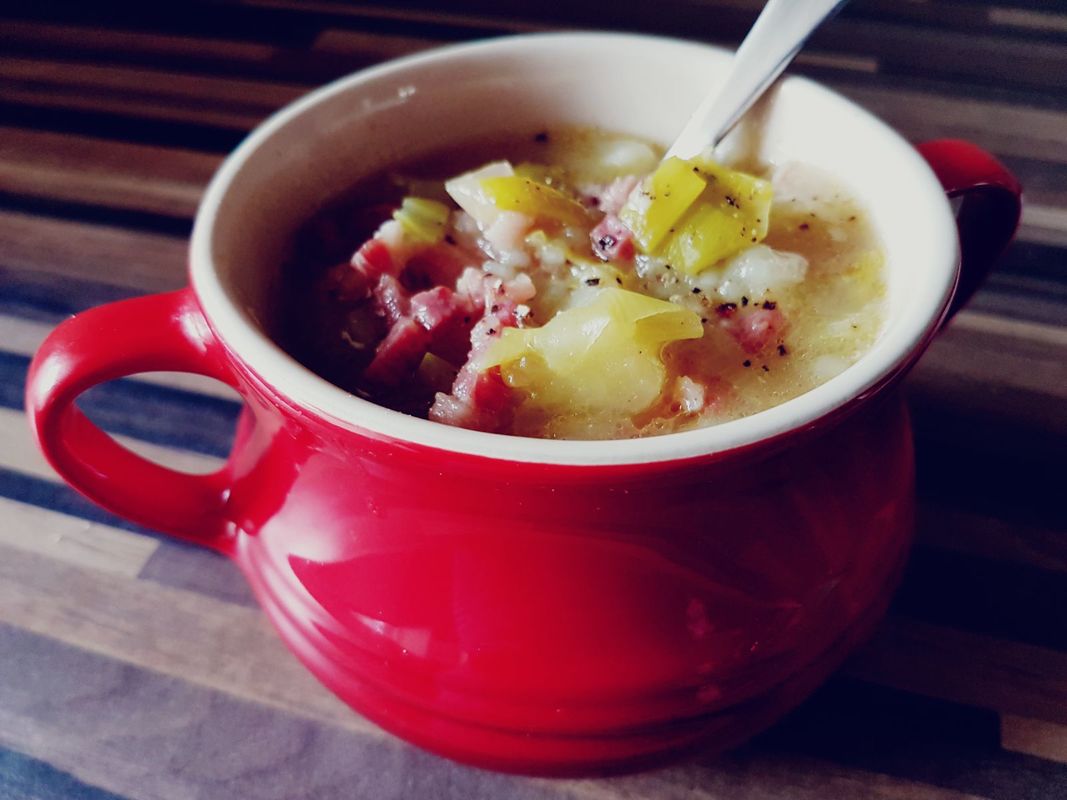
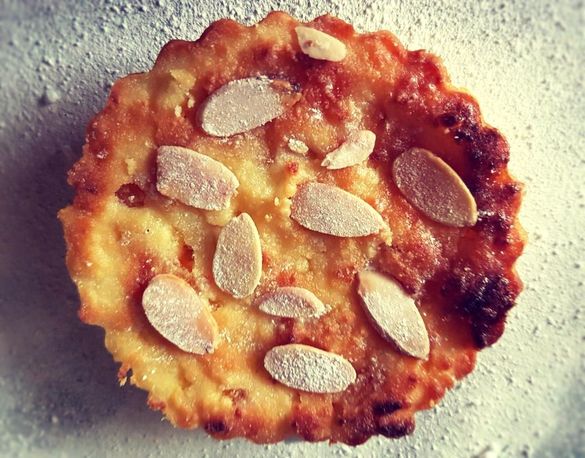
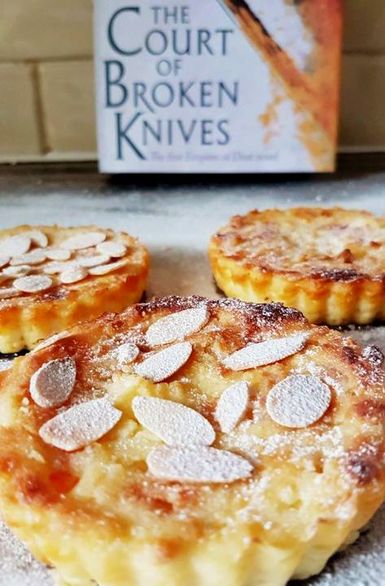
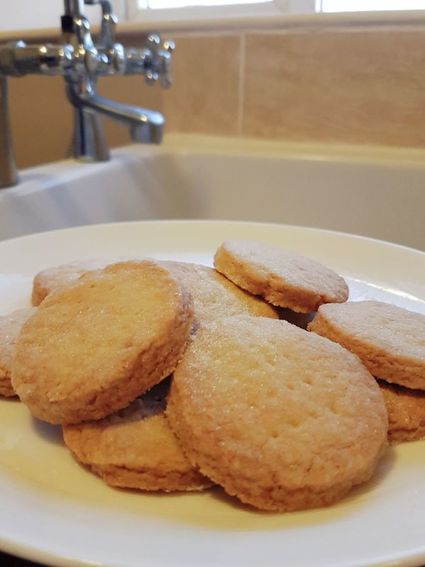
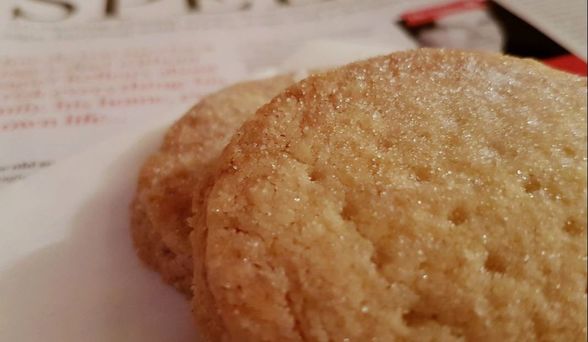
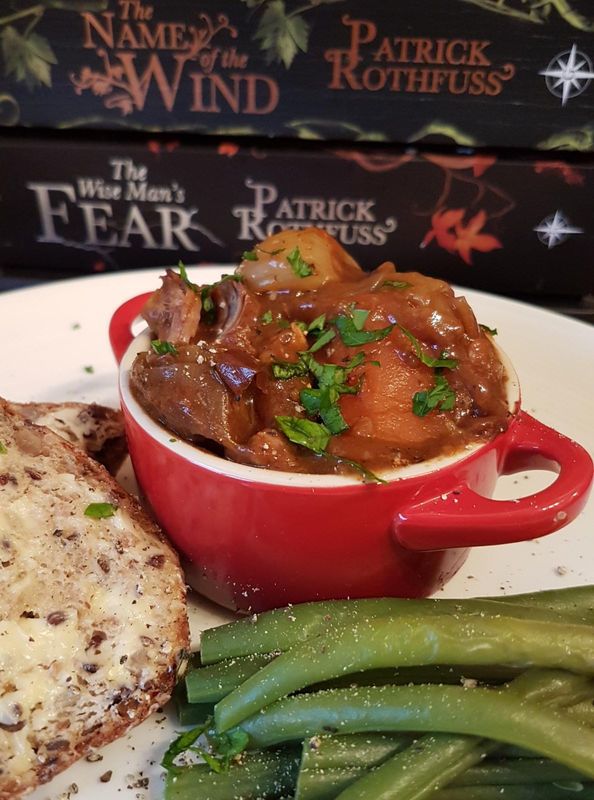
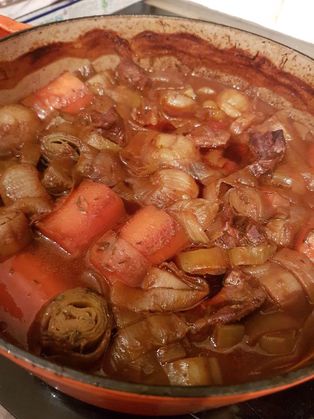
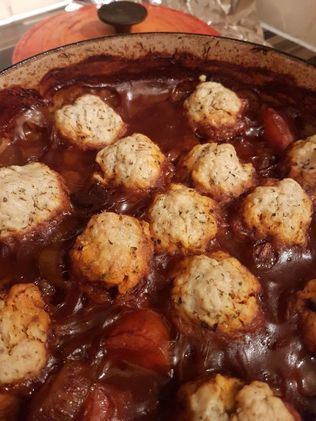
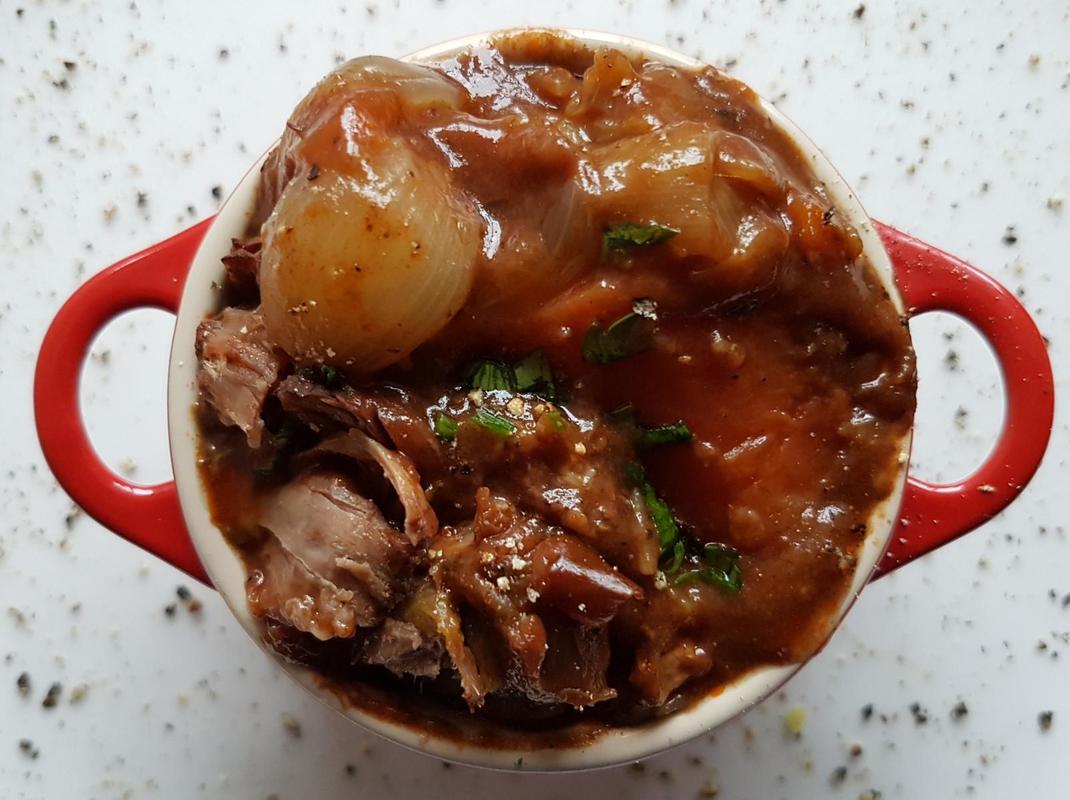
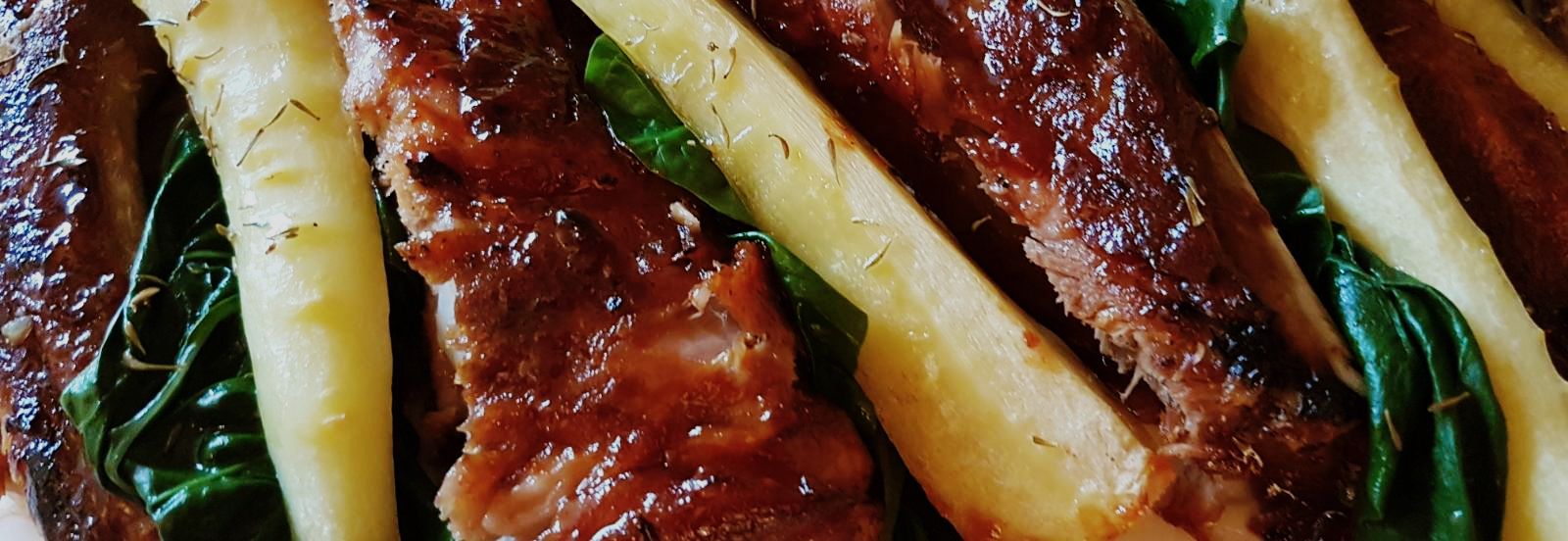
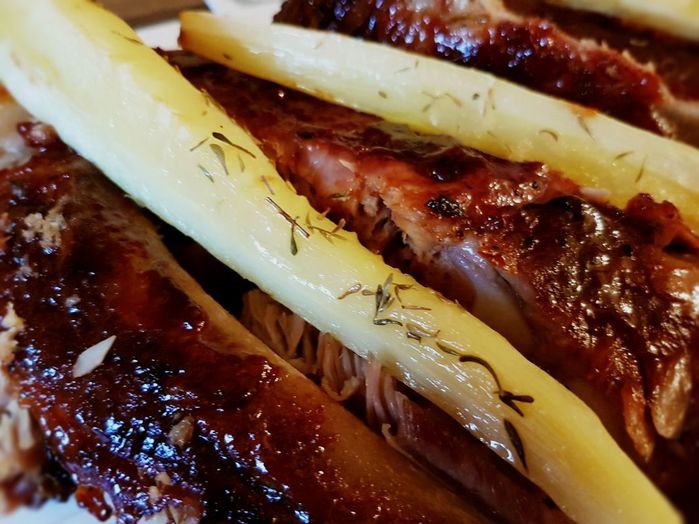
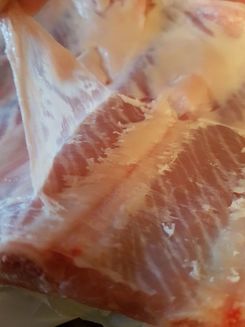
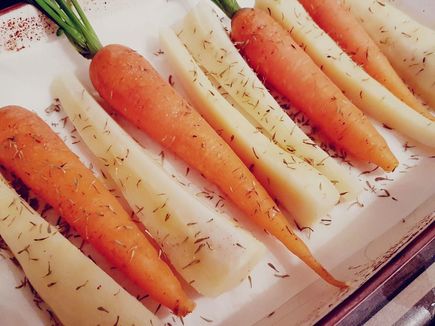
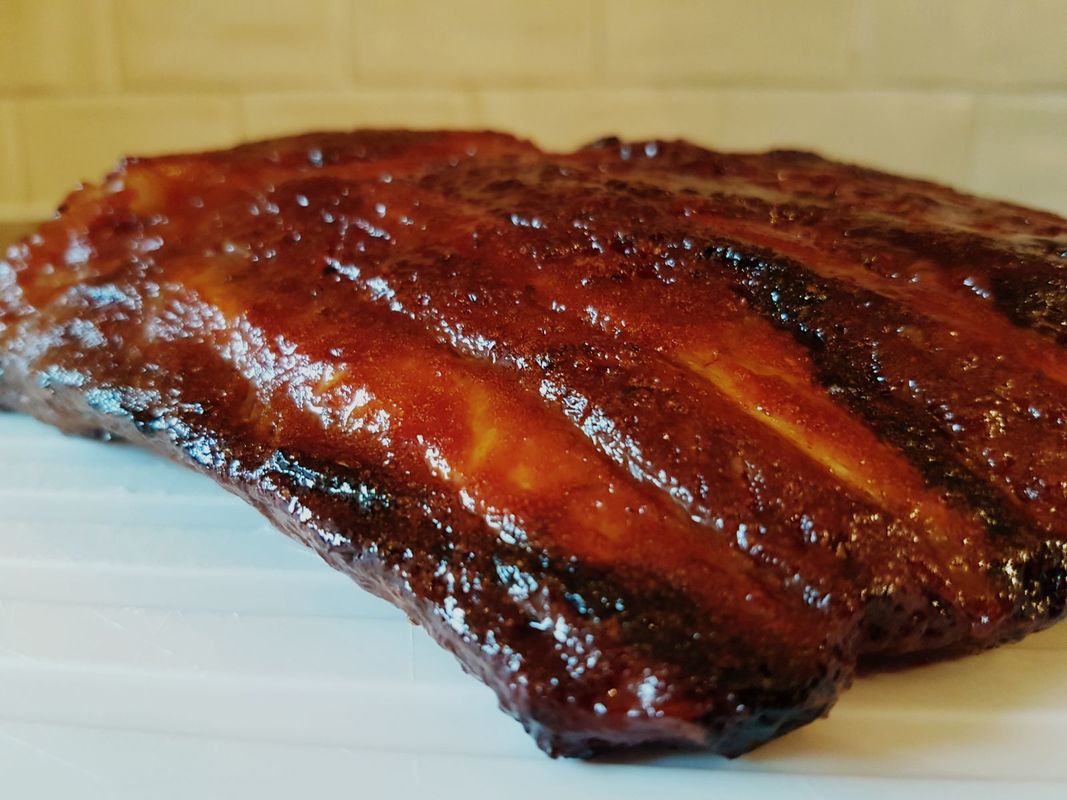
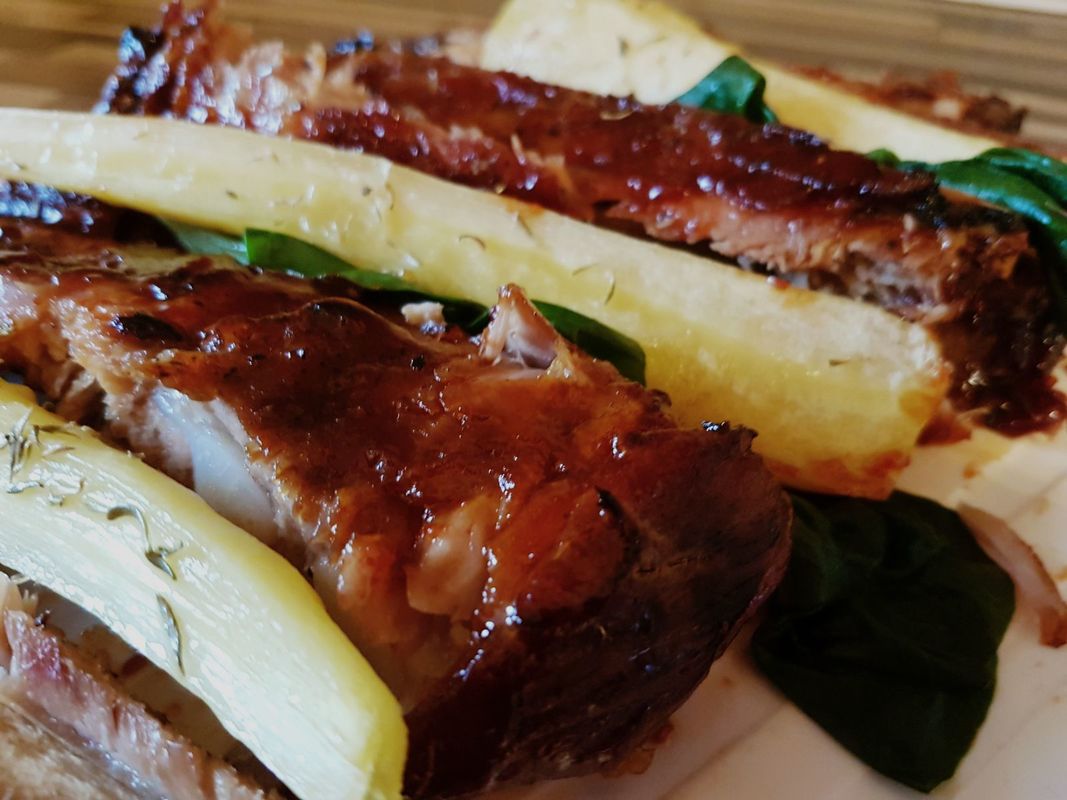
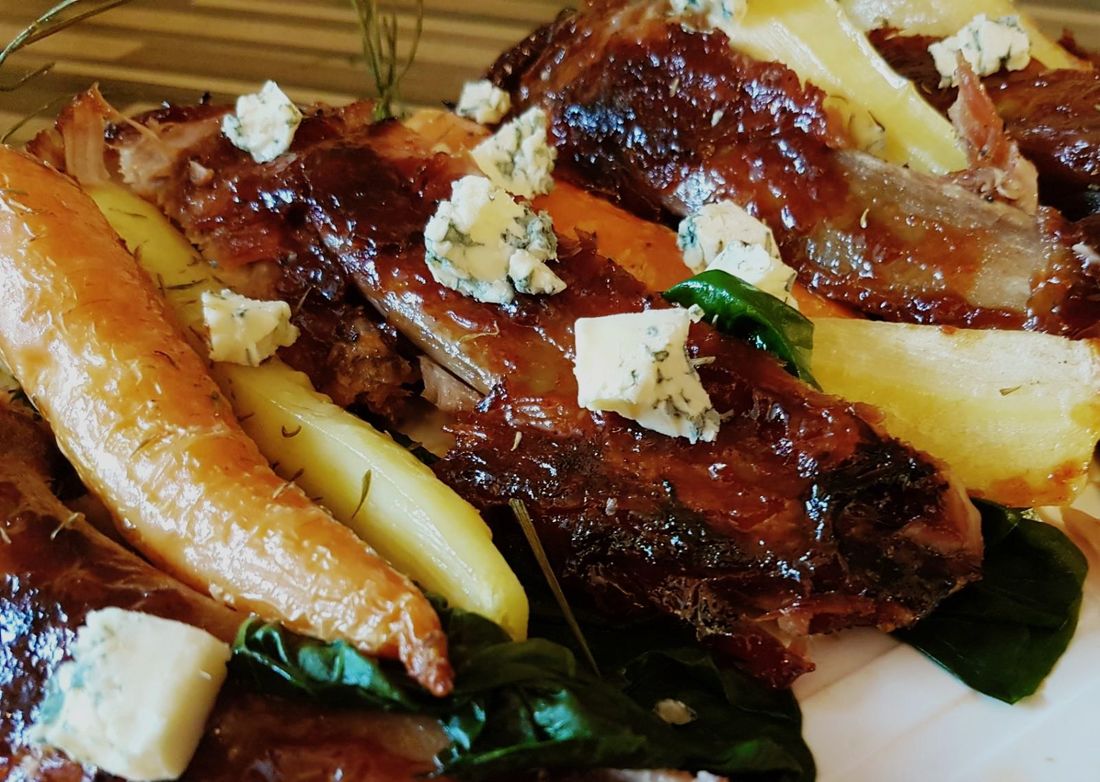
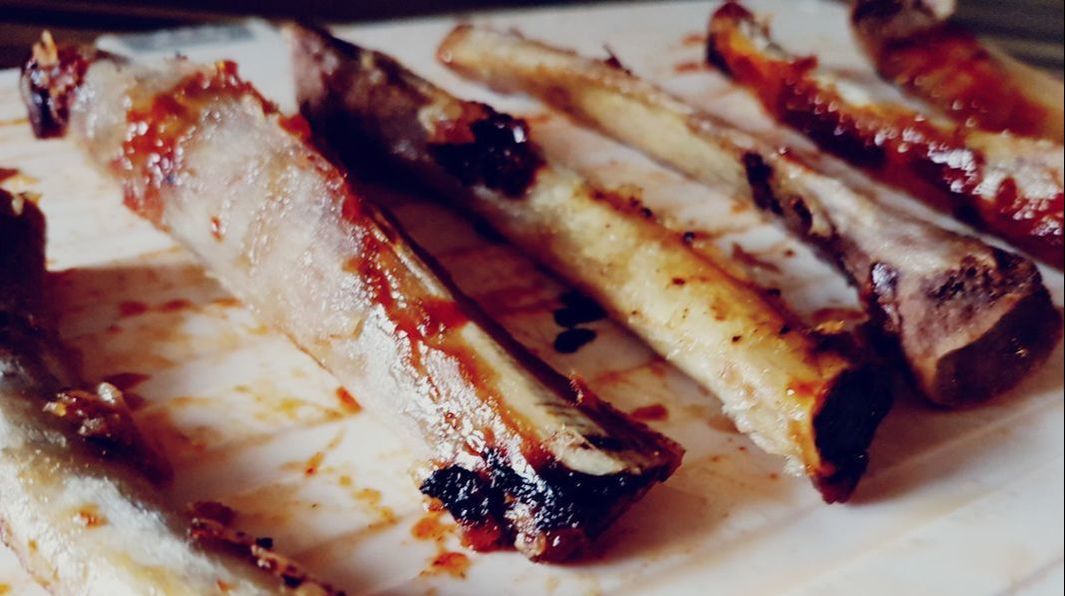
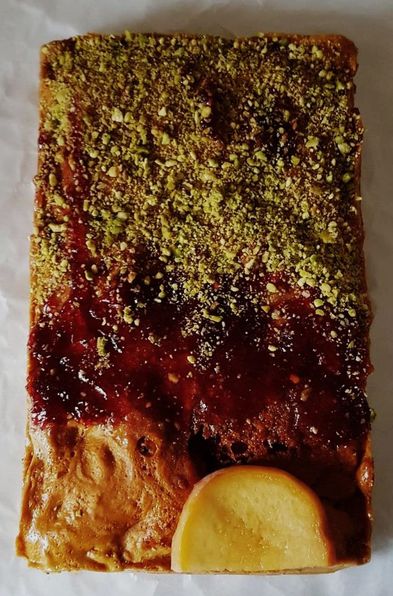
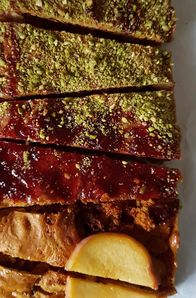
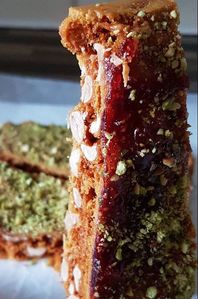
 RSS Feed
RSS Feed